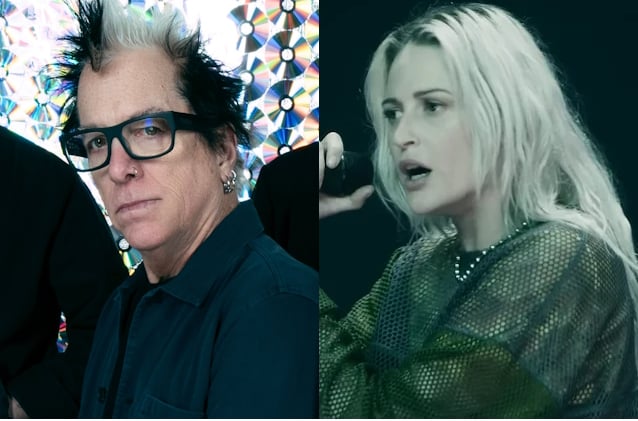Pearl Jam released their third album, Vitalogy, in late 1994 at a time when the Seattle band’s popularity was continuing to build at an explosive pace. Of the many unexpected things that developed in that time period, the biggest surprise was the group’s summit in the recording studio with Neil Young for 1995’s Mirror Ball.The band’s longtime associate, Brett Eliason, has a vivid memory of how the collaboration took shape. “Pearl Jam had played Constitution Hall in D.C. for Gloria Steinem’s Voters for Choice [concert],” he recalled in a new interview on the UCR Podcast. “Neil and Crazy Horse joined us for that show. Pearl Jam was last. Neil had done his set [and] had some new songs he had been working on. He was so blown away by the energy of Pearl Jam that night that he asked if they would do an encore with him and play one of the songs that [eventually] became part of Mirror Ball. They learned [it] backstage, went out and it was great.”Young and Pearl Jam performed “Act of Love” that night and the moment was the catalyst that planted a seed in the Canadian rocker’s head that he should make an album with the group. True to his usual form, he had a vision for how it should all go down. He told the band members that he wanted the sessions to be very “Pearl Jam-centric.” He would come to Seattle to record the material with the group, utilizing their longtime producer, Brendan O’Brien, plus Eliason and other members of their team.Bad Animals, the area recording studio owned by Ann and Nancy Wilson of Heart at the time, ended up being the location chosen for the sessions. “We brought this huge rug from the rehearsal space to lay down,” Eliason remembers. “We set up couches and lamps, and made this large room super homey, like a big living room. The band was set up in a semi-circle with live monitors….it was kind of similar to a stage setup, but they could play live together out there and that’s what they did.”Like so many of Young’s past recordings, Eliason recalls that the sessions were pretty loose. “We’d go until they captured what they wanted as a base and that was it. There was really no fixing unless it was such a great take and there was one little thing that needed to be repaired. We’d punch it in and fix it up. Neil would double his voice a bit, but even his vocal was being laid down at the same time the band was playing and he was playing guitar. It was just magical.”Listen to Neil Young and Pearl Jam Perform ‘Downtown’What you hear is quite literally what they got during the sessions in January and February of 1995. “The majority of that record was just the board mixes that were up,” Eliason confirms. “That’s Neil. If it was feeling right at the time, it’s done. I love that about him. He doesn’t overthink things. Probably 90 to 95% [of Mirror Ball] were just the rough mixes that were up on the console between Brendan and myself.”Young and Pearl Jam took the fruits of what they’d accomplished to the road, playing a short series of shows in the summer of 1995. It capped a momentous year that had also seen Eddie Vedder give the speech to induct Young into the Rock & Roll Hall of Fame, two days before the Voters for Choice concert. He praised the songwriter for teaching Pearl Jam “a lot about dignity and commitment” and perhaps most importantly, “playing in the moment,” something they definitely eventually captured during the Mirror Ball sessions.Fans who are hoping for an expanded reissue of Mirror Ball, can perhaps dim those hopes as far as unreleased studio material. “From the [sessions], all of that pretty much got out,” he says. “We did record a live show at Moe’s up on Capitol Hill in Seattle. That was the first time they’d played this record together. Those tapes are somewhere. That would be fun, because it was a good show.”During the interview, Eliason also spoke about the recording process for Pearl Jam’s Vitalogy, which was recently remixed for the first time in spatial audio. You can listen to the conversation below.Listen to Brett Eliason on the ‘UCR Podcast’Neil Young Albums Ranked He’s one of rock’s most brilliant, confounding, defiant and frustrating artists.Gallery Credit: Michael GallucciNext: The Neil Young Song Inspired by Charles Manson






